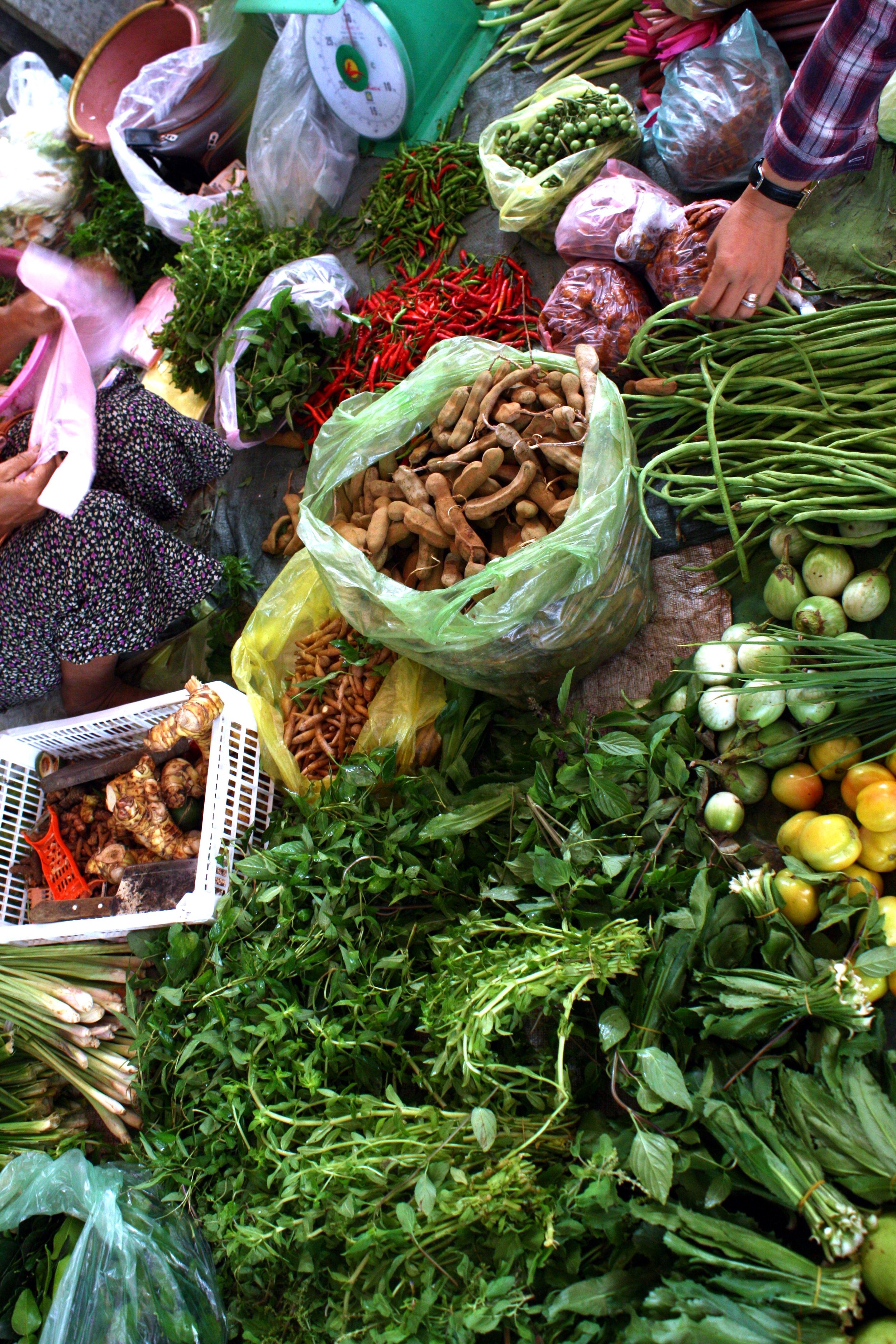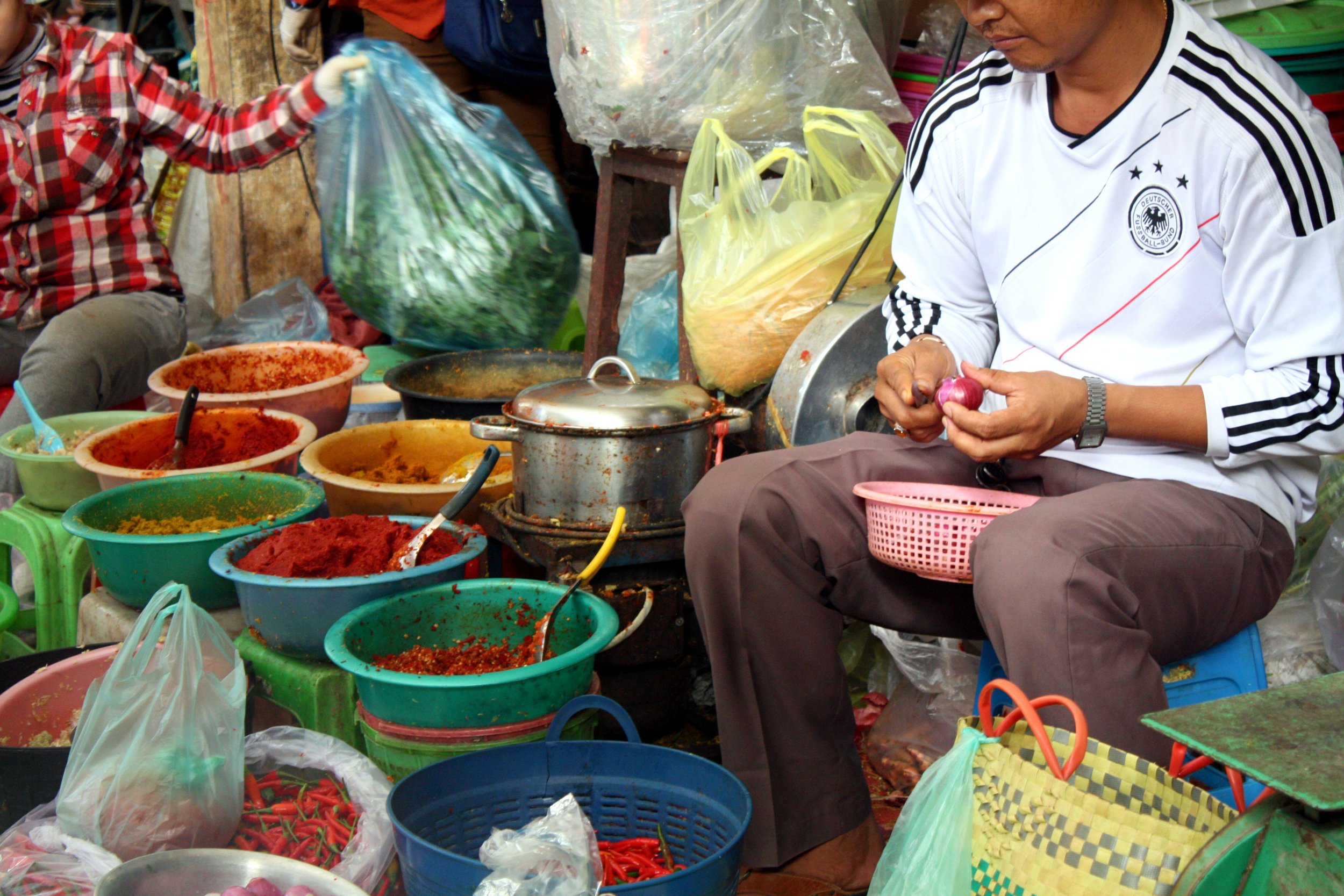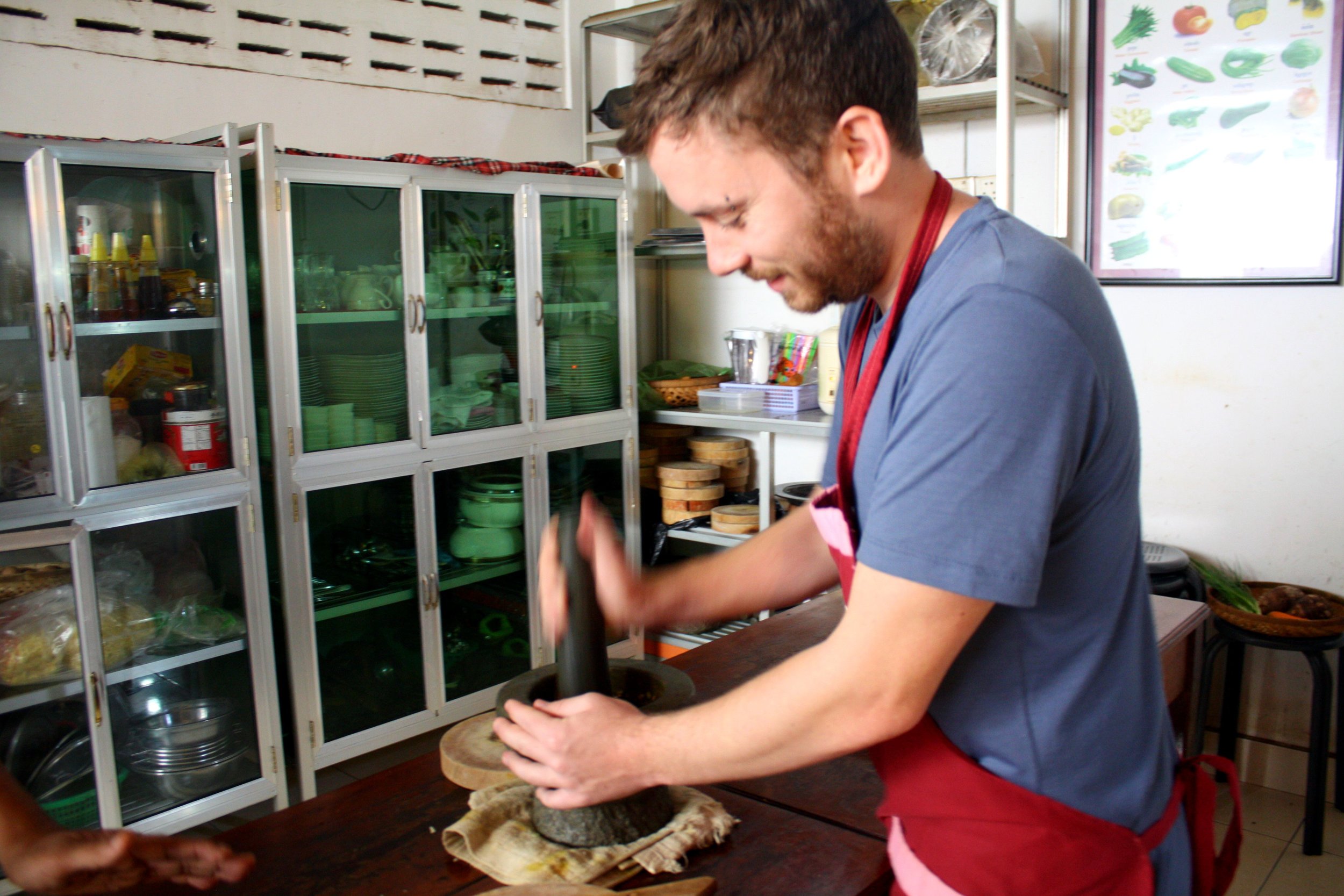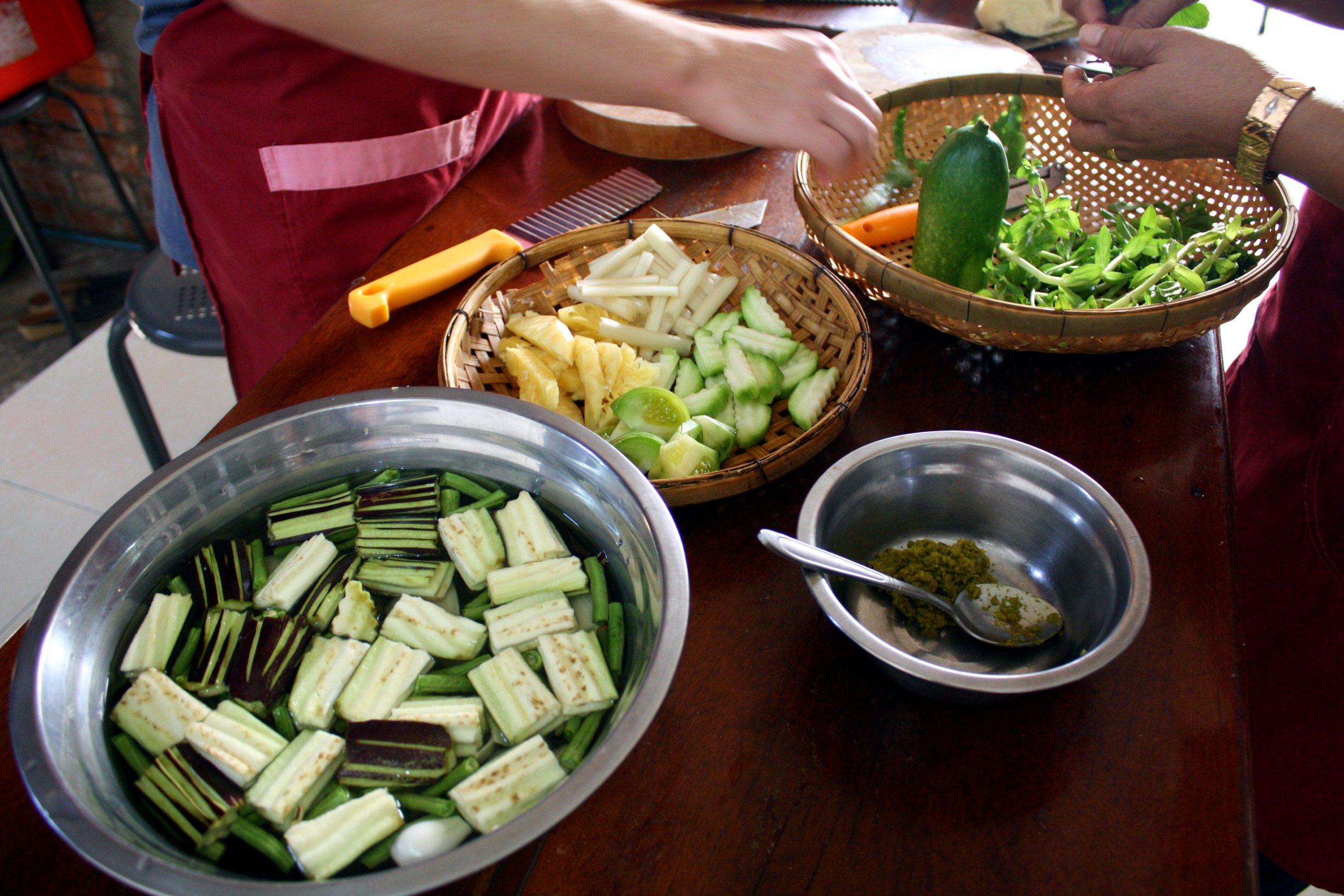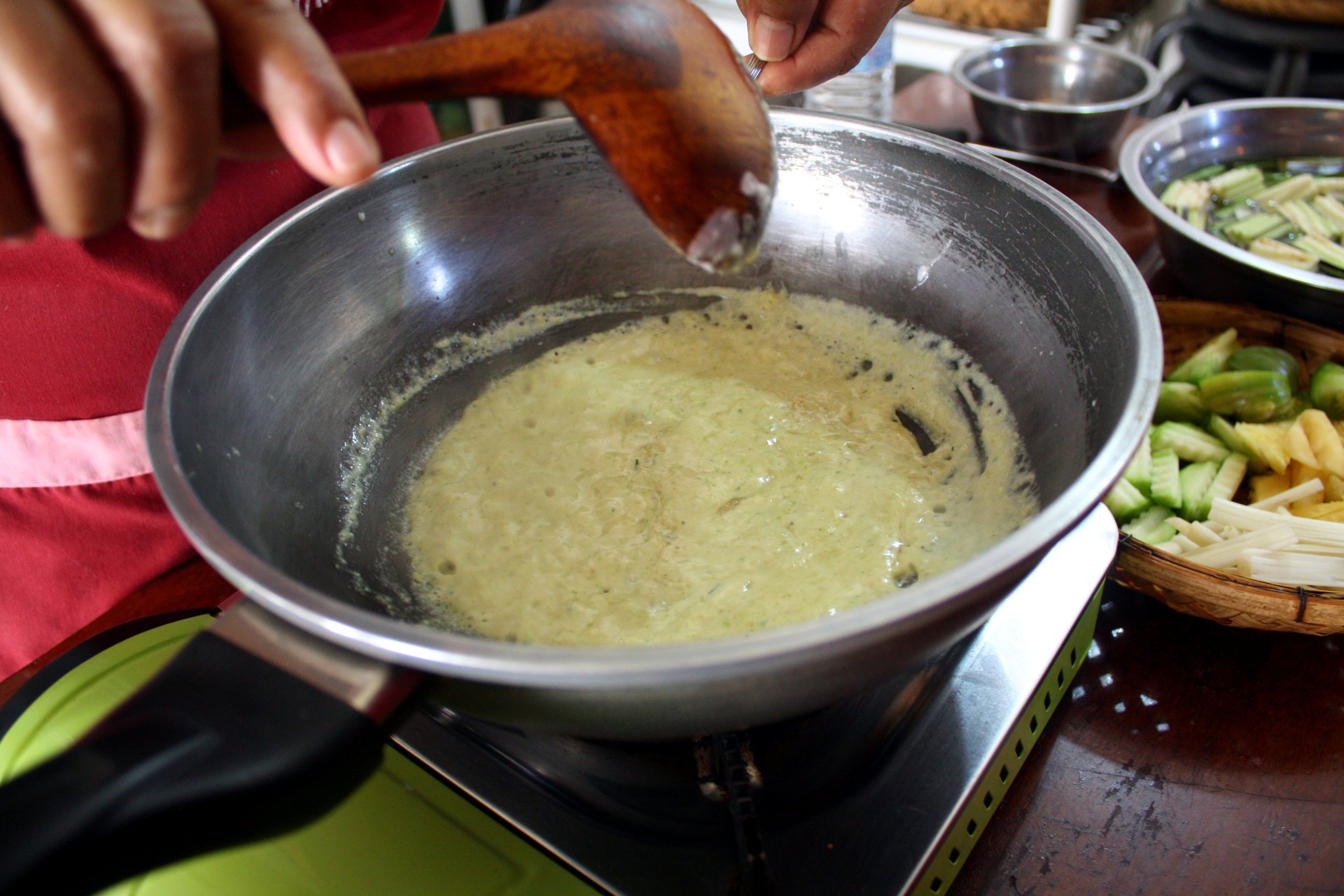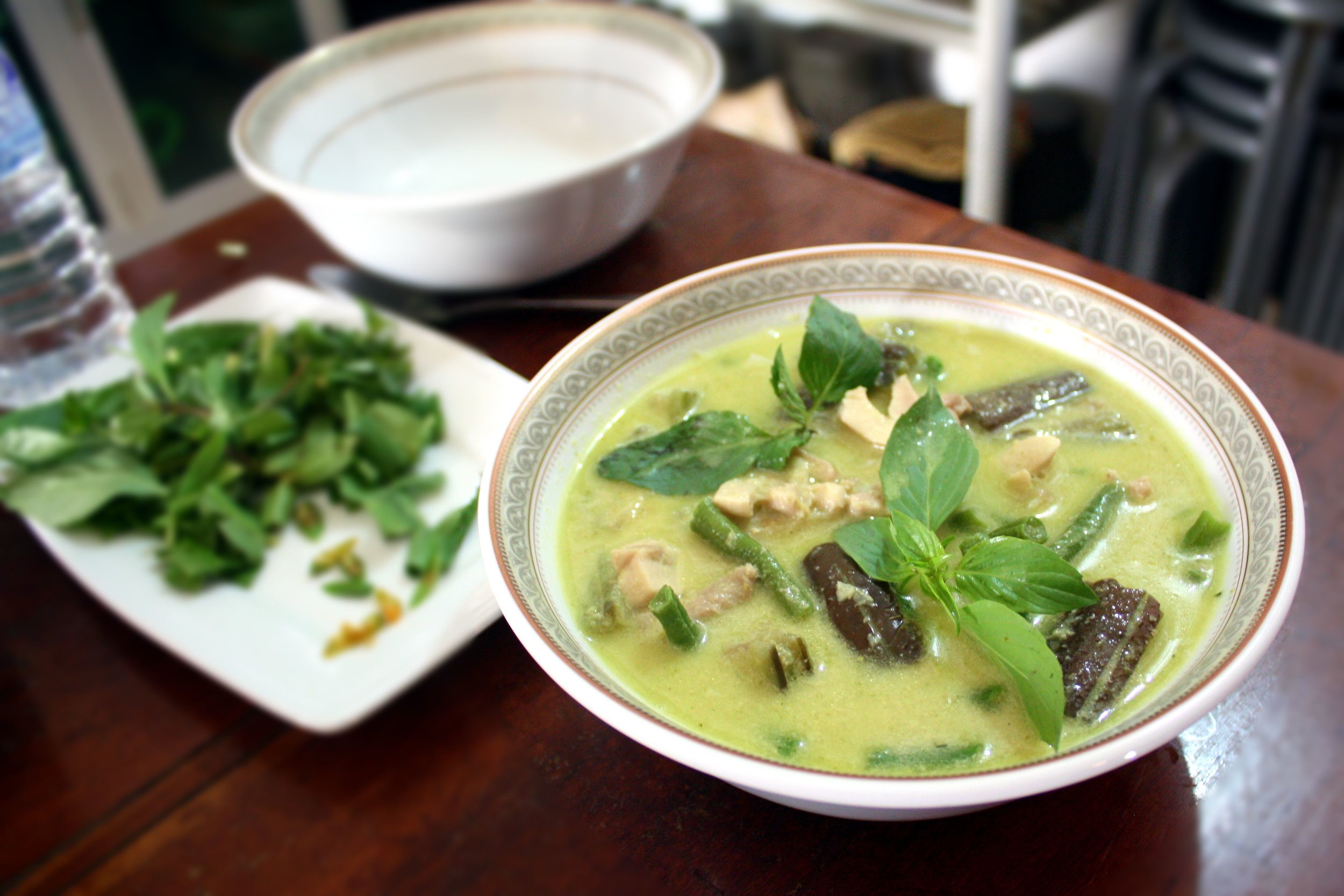More information
Location: Battambang, Cambodia
Summary:
This class is indicative of what you'll find across Cambodia: a good introduction to accessible Khmer food at a very reasonable price. All of the menu items are very Western-palate-friendly, the kitchen is clean, and the instruction is good. The available menu, however, is not unique to this class. It features the same 5-10 options found around the country, though they are done quite well here.
Who should attend:
Fans of fish amok, beef lok lak, curry and other well known Cambodian dishes, who want a fun morning or afternoon activity finding out what goes into making these dishes.
Dishes:
Fish amok
Everyone who has been to Cambodia recognizes this steamed fish curry in a banana leaf. It's heavily promoted as Cambodia’s national dish and while that may or may not be true, it's certainly delicious and approachable.
Green curry
While Thai curry gets its colour from fresh green chilies, Cambodian green curry gets it from tons of fresh lemongrass. This curry is very fragrant and not at all spicy.
Sour fish soup
The pleasant sourness in this soup comes from tamarind, and it's chock full of vegetables. Good way to up your vegetable intake while you're on vacation.
Coconut plantain and tapioca dessert
The plantains retained a nice amount of texture after being boiled with tapioca, water and coconut milk. A nice dessert to finish the meal.
Full review:
Though it has its flaws, the cooking class at Nary’s kitchen is a solid introduction to Southeast Asian ingredients and methods.
The cooking school was clean and the staff made a real effort to wipe down everyone’s work stations regularly. They have clearly taught these dishes a hundred times or more - the class operates like clockwork. Sometimes that makes it feel slightly rushed, but it’s understandable: they’re running it as a business rather than a passion project and it shows. If you're unfamiliar with ingredients like galangal, kaffir lime leaf, lemongrass and turmeric, this class will help you get to know them and how to use them to make an aromatic curry paste, among other things.
The downside of this class is that you won't learn how to make the food that most Khmers eat. Most Khmer food that regular people eat contains a fermented fish paste called prahok, but the majority of the food that you will encounter as a western tourist does not contain it. If you're chasing “authentic” Khmer food, this is not it.
The other factor that's slightly off putting is the overuse of chicken bouillon powder, a mixture of salt, msg and “chicken”. It was in every savoury dish, and in our opinion it would be just as effective to use prahok or real chicken stock for umami and salt instead.
What we learned:
Khmer food is designed to be quick and easy. If you have the ingredients on hand, there are usually only a couple of steps between you and a hot plate of delicious food. Common ingredients used in Khmer food include lemongrass, galangal, kaffir lime leaf, turmeric, tamarind, palm sugar and coconut milk; the ingredients used are very similar to those in Thai food minus the chilies.


